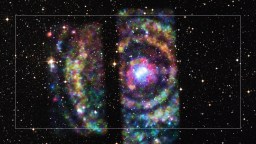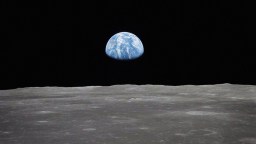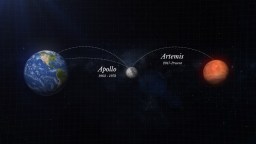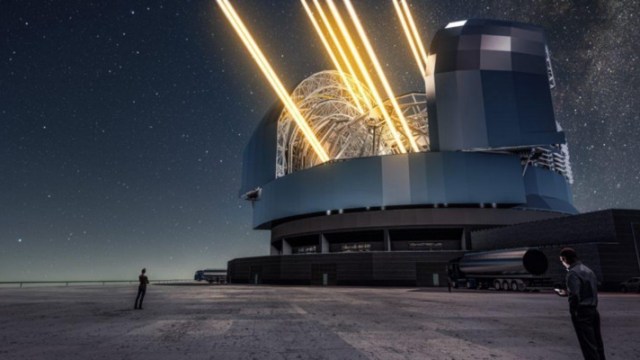15 gift ideas for space fans and future astronauts
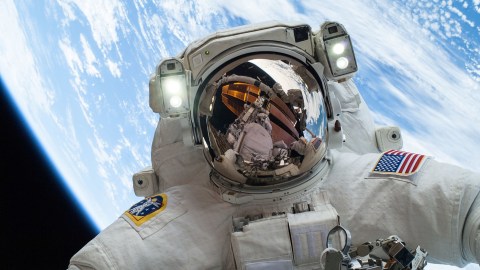
Image Credit: NASA
- Since the dawn of time humans have been fascinated with the stars and with space.
- This gift guide will help you shop for the NASA fan on your list.
- From socks to laser projectors, there is something for space fans of all ages.
Long before we had the technology to go, humans have been dreaming of space and everything beyond our sky. Gazing at the stars, watching astronauts travel to the moon, and seeing machines launched to distant rocks and planets has inspired many to want to learn more about astronomy and to pursue careers in science. Those space fans deserve something special, and we have just the things for them.
This gift guide is specifically for space fans and those who hope to one day enter orbit. From the original space pen to a levitating moon lamp, the items chosen for this list are well-reviewed and available to purchase online. Some are designed to be educational, while others are just cool objects meant to show off how much you love space.
Everyone needs socks, but only the coolest people deserve these space themed novelty socks. This four-pack features rockets, a diagram of the solar system, a fun math design, and an astronaut posing on the moon. If you have to keep your feet on the ground, you might as well do it in style.
Switch things up from the classic blue NASA logo and gift someone a new tee with a throwback feel. The graphic on this officially licensed Popfunk tee looks to be inspired by the 1980s, the decade that saw the Space Shuttle Discovery launched into orbit for the first time.
You don’t have to go to space to write like a real astronaut. In the mid-1960s, the Fisher Pen Company reportedly spent $1 million developing anti gravity pens with pressurized cartridges inside that meant they were capable of writing upside down, in hot and cold temperatures, and underwater. They offered the pens to NASA and after some testing the space agency ordered hundreds for its Apollo astronauts.
Magnetic levitation always looks cool, but the LEVILUNA lamp is able to blend aesthetics with the practicality of a small light source. The small orb is made using 3D printing. The result is a highly detailed replica of Earth’s moon that floats between 8-12mm above its wooden base. It can also illuminate a desk or nightstand with a soft glow.
See physics and magnets at work while you stare at this colorful and wonderfully nerdy toy. It requires one 9V battery (not included) and some assembly, but once it gets going it doesn’t stop.
BlissLight’s Sky Lite fills any space with a bright blue nebula cloud pattern and drifting stars. The pattern can be changed to just the cloud, just the stars, a combination of the two, or constant stars with a pulsing cloud effect. There is also a built-in timer that can turn the device off automatically after 6 hours. It’s the perfect night light for someone who is obsessed with all things cosmic.
Written by a planetary scientist, this best-selling book demonstrates various ways to view the stars and other space objects with or without special equipment. It is also filled with fun facts, explainers, and clear illustrations of planets and constellations.
This 837-piece LEGO kit allows builders to be rocket engineers as well as the mission control crew for a miniature launch without ever leaving the comfort of his/her home. There are six minifigures in the set, including astronauts, scientists, a Launch Director, and a ground crew technician, each with a very important job to do. Kids ages 7 and up will be inspired to learn more about what it takes to put a heavy rocket into orbit and about the men and women who make it happen.
Advertised as being for entry level astronomers, this portable telescope expands the user’s connection with and access to the cosmos. It comes with bonus educational software that star gazers can use to discover more about when and where space objects can be seen in the sky.
National Geographic’s Solar Space Explorers kit comes with sheets of wood that have been laser-cut into small parts. Together the pieces and included gear components form two solar-powered vehicles: the Mars Rover and a Moon Buggy. Whether they’re being made to race down the driveway or sitting statically on a shelf, these vehicles are fun to construct and cool to look at. It’s basic engineering and moon exploration rolled into one package.
Using official photos from the NASA archives, this adult coloring book is not your average stay-in-the-lines kind of activity book. It includes 35 NASA-captured images of planets and solar flares for reference and/or inspiration. Space fans can choose to color the images true to life, or they can let their imaginations run free across the pages.
These mugs use a heat-changing technique that hides constellations among the stars until a hot liquid is poured inside. There are 11 constellations in total, including Andromeda, Scorpius, and Hercules. When you want the figures to go away, just chill the mug and everything but the stars will fade away.
There’s life before PopSockets and there’s life after PopSockets. Wrapping a finger around this accessory while holding a mobile device provides a more secure grip while texting, watching movies, or reading BigThink.com. The variety of designs lets anyone add their own personal flare, and the top portions are swappable so the owner is allowed to change their mind.
The meteorites at the Campo Del Cielo crater field in Argentina are believed to have impacted over 4000 years ago. Actual pieces of the space rock have been modified with a metal loop and a wax cord so that they can be work as a necklace. Each quarter-sized meteorite pendant is unique and only weighs around 7 grams so it is barely noticeable. The necklaces come with certificates of authenticity and tiny chests for storing or displaying when they are not being worn.
This hefty book is 468 pages of NASA history told through essays and over 400 stunning high resolution images from the agency’s archives. Even the biggest NASA nerds will learn something new from this impressive tome as they flip through its pages over and over again.
When you buy something through a link in this article Big Think earns a small affiliate commission. Thank you for supporting our team’s work.
